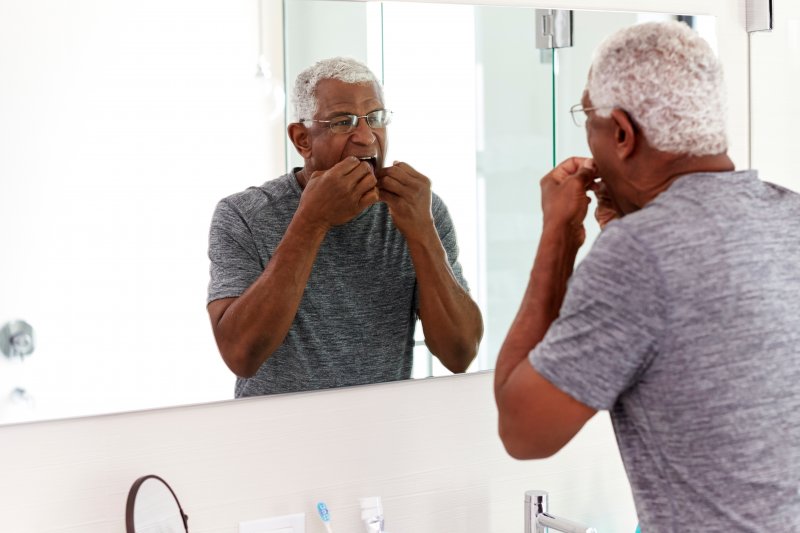
After dental implants are placed and fully healed, you can expect them to last for several decades (and even for life) when you take proper care of them. However, that means you’ll need to take the right steps to ensure your oral hygiene is working as intended. While brushing may be relatively straightforward, flossing is not as much for some. This is especially the case for dental implants, which are a bit more sensitive to flossing compared to natural teeth. When flossing dental implants in Philadelphia, keep these facts and tips in mind.
Important Facts to Know About Your Implant
When cleaning natural teeth, you’d typically be able to push the floss into the gum pocket without causing any harm to your soft tissues. This is because natural teeth are held in place by a periodontal ligament. This component is responsible for keeping your tooth secured in place. The ligament also contains many nerves, which means you’d have to be flossing way too hard for any pain to register.
It’s actually a good thing that the ligament reacts in this way because it effectively alerts you when you’re not flossing correctly. Because dental implants are not held in place through a periodontal ligament (which is removed ahead of implant placement), you won’t get this same luxury when flossing. Instead, the implant is held in place with a peri-implant seal. This is far weaker than a ligament and does not contain any nerves. If the seal is broken, bacteria can enter the gum pocket and infect the jawbone.
Tips for Easier Flossing
In order to prevent damaging your implant or your gums, keep these tips in mind:
- Hold the floss around your fingers in each hand. It’s best to wrap the floss around each of your index fingers so you can easily navigate the floss inside your mouth.
- Slide the floss up and down the sides of your implant. To remove the floss, you’ll simply unravel it from one index finger, then use your free hand to pull it out. Repeat this process for any other posts you have.
- Alternatively, you can invest in an oral irrigator (also known as a water flosser) if flossing your dental implant through traditional means is too difficult. Using pressurized sprays of water, this device can easily loosen food particles and plaque from tights spaces within your mouth.
- Keep in mind that an oral irrigator should not replace flossing entirely, rather, it should complement your flossing routine.
Even the best oral care routine at home isn’t enough to call your hygiene regimen complete. By visiting a dentist every six months for an annual checkup, you ensure your habits are working effectively to keep dental disease at bay. Schedule your next appointment to speak with a professional and gain true peace of mind about your smile and oral health.
About Dentex Dental Group
Whether you need an exam, cleaning, or another dental service, Dentex Dental Group makes you its highest priority. All of our dentists are highly knowledgeable on the best practices to maintain at home for positive oral health, including the maintenance of dental implants. They’re happy to sit down with you, do whatever it takes to help you feel confident about your oral care, and make sure your dental implant is in good condition. To schedule an appointment, you can contact them through their website.


 (215) 677-2401
(215) 677-2401